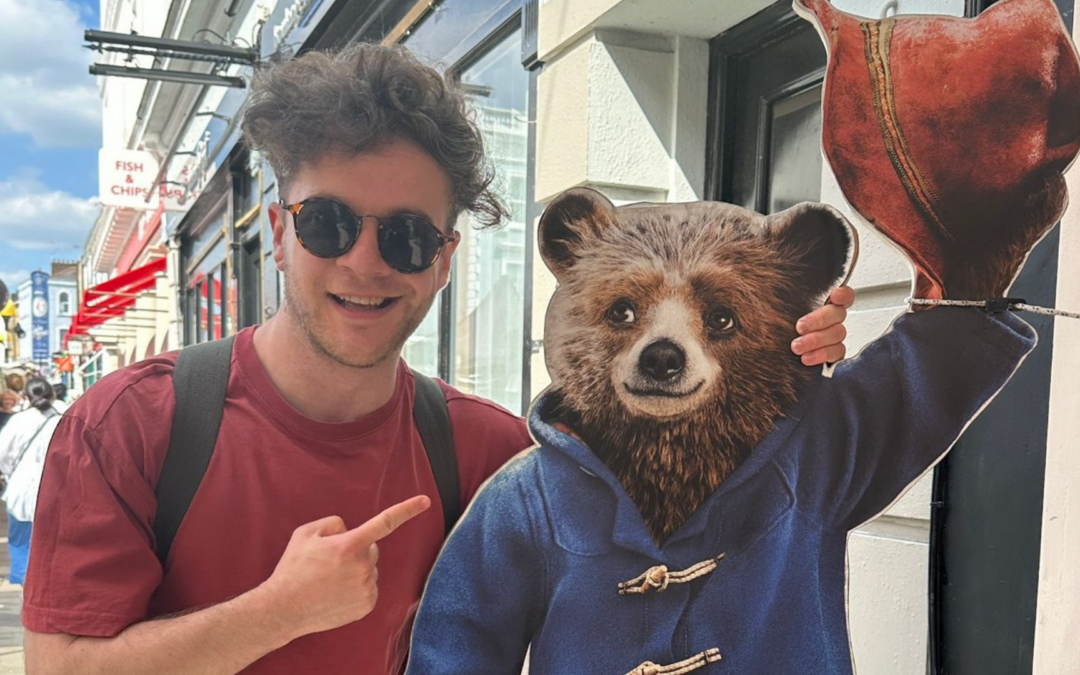The Team Behind Snip
Animation Mentor: Can you tell us a little about the creative group behind Snip? How do you all know each other? Snip Team: We’re a ragtag group of animators from across the United States and around the world. We met during our time at AM. Steven had been running an after class Google Hangout since Class 3 that we all joined and used to critique each other’s work, joke around, and through this we quickly developed friendships that last to this day. Other former classmates came and went from the Google Hangouts, but the five guys destined to work on Snip stuck to it. Those Hangouts eventually became the production meetings for Snip itself. Our team consists of the following:- Adam Koenig: Director, Story, Animation, Modelling, Lighting, Rigging, Compositing
- Jeb Cozby: Animation, Modeling, Compositing, Story
- Preet Uppal: Animation, Smoke Simulation, modeling, Compositing, Story
- Steven Jones: Animation, Modeling, Compositing, Story
- Diony Lopez: Animation, Modeling, Rigging, Compositing, Story
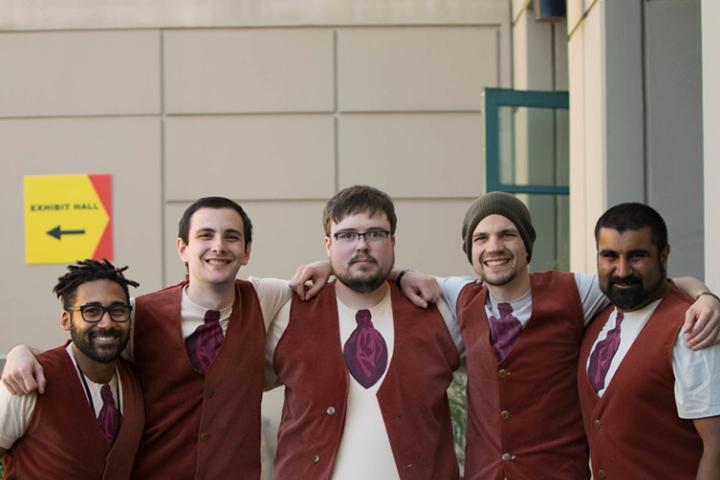
The Snip team, from L-R: Diony Lopez, Jeb Cozby, Steven Jones, Adam Koenig, and Preet Uppal
The Short Film Process
AM: Where did the idea for Snip come from? Snip Team: As time went on we continued to grow as animators and friends, and began to exchange more ideas with each other, which eventually led to some of us talking about the idea of doing a short film. In October 2013, shortly after graduation, we ended one of our meetings with a call for story ideas. The five of us went away for the week and came back with our pitches. Out of the 5 ideas we presented we narrowed it down to the two most feasible and further developed both of them for a couple weeks. We ultimately picked the story that would become Snip, based on an idea Steven had for a pantomime shot for his demo reel, because it had an articulated and compelling conflict and resolution. Once we were all on the same page, we sat down and fleshed out the story and boarded it out using the screen sharing function in Google Hangouts. In our naivety, we thought this was going to be our practice film to see if we could actually make one. We had no idea what we were getting ourselves into. AM: What’s one thing you did not expect that you learned from creating a short film? AK: Balancing where to spend my time between investing in relationships, personal health, and when to sacrifice that for productivity on Snip was both the hardest and least expected skill I had to practice constantly. It’s hard to communicate how much we underestimated the amount of work this would be. This took us 5 years, which is insane, but that could paint a picture that it was slow and steady, work 3 hours a night, and that eventually we got there. The reality being most of our days consisted of working regular jobs and then working on Snip late into the night. Most weekends were spent working on Snip 8 – 12 hours straight. I took sick days for what I jokingly referred to myself as “taking my Snip days”.This took us 5 years, which is insane, but that could paint a picture that it was slow and steady, work 3 hours a night, and that eventually we got there. The reality being most of our days consisted of working regular jobs and then working on Snip late into the night.We constantly sacrificed time from developing friendships and family relationships. Date nights (for the married guys) were weighed against getting a shot ready for feedback. I remember so many days at my job walking around like a zombie because of working on Snip all night. This was something that started causing real issues in my life. I realized that I was communicating that this short film is more important to me than those relationships, which was articulated through where I was spending all of my time. When you, for 3 years, constantly say, “sorry, I have to work on the short”…that inherently is going to strain those relationships. And that was a loud wake up call for me. I begin to notice how much this short was running my life and I wanted to continually pursue a better balance. Knowing that it’s incredibly important to step away from the computer no matter how much something should get done. It’s just a short film, it’s not nearly as meaningful as the people in our lives. Not to downplay how proud I am that we’ve accomplished this incredible feat, but in this area, especially, I had to grow up a lot and I’m still practicing when to sacrifice what.
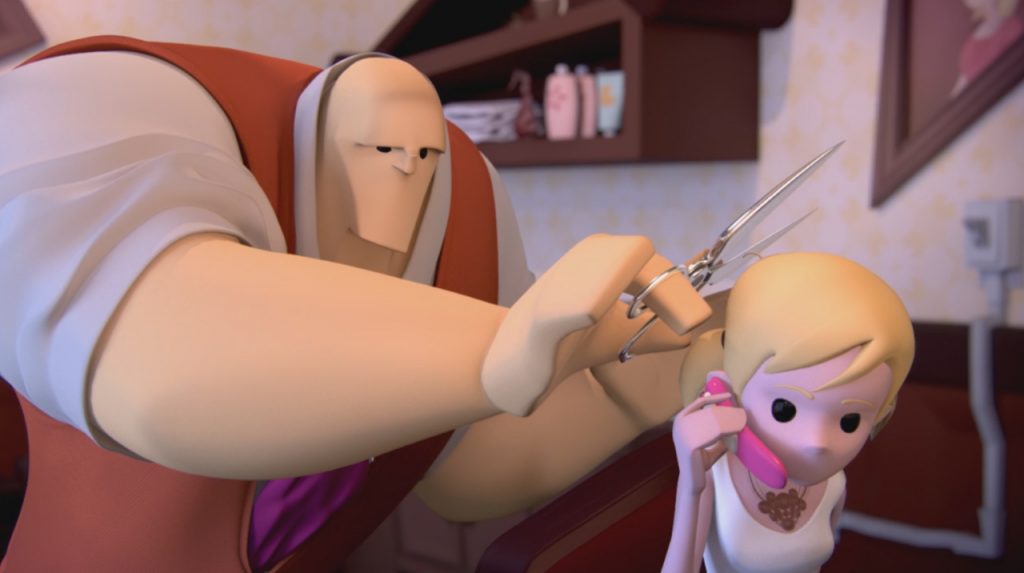
Stan practicing his art in Snip
Short films are incredibly distilled stories. Every beat has to be so concise and clear because you don’t have a lot of room for things that don’t fit or that aren’t telling the story.
Animating Snip
AM: What was the most difficult shot you animated for this film? What was the most fun? AK: Probably the shot where he cuts off her ponytail. We were aware that that was a very important shot in terms of, “if it wasn’t clear that he cut off her hair, no one is going to care about the rest of the short”. So while the animation itself wasn’t too complicated or anything, designing the shot in a way that made it as clear as we could that: he cut off her whole pigtail…and that = bad. The most fun was maybe the shot when she’s examining her new hairdo in the mirror…actually now that I think about it, on a technical level, this one was probably the hardest, because most of the shot was in the mirror, which I couldn’t actually see the final composition of the shot while animating in Maya. I had to make a “close enough” camera through the wall, and then render out simplified versions periodically to see what the actual poses even looked like in the mirror. Not to mention Stan is holding a hand mirror that’s reflecting in the main mirror revealing the back of her head, which again I couldn’t see what was in the mirror until rendered. So getting all that to work…was a process for sure. It was a lot of trial and error. BUT this was also a lot of fun for me, because I animated it heavily influenced by how my little sister would check and mess with her hair and it was fun to caricature that. JC: The most difficult shot for me was the one with Stan rapidly cutting hair with two pairs of scissors. It took a lot of planning to get the motion of the scissors looking good, which included animating a 2d version before jumping into Maya. Even then, the final animation required multiple passes, and if it wasn’t for the relentless feedback from the rest of the team it would probably have ended up as an unclear mess. It’s hard for me to say which shot specifically I had the most fun on. The aspect of each shot that I definitely enjoyed the most was anything involving quick and snappy movement. I had a lot of fun figuring out the best solution to, say, get Stan across the screen in four frames, or having him flail about with several props, all while making sure that every action is clear and doesn’t confuse the audience.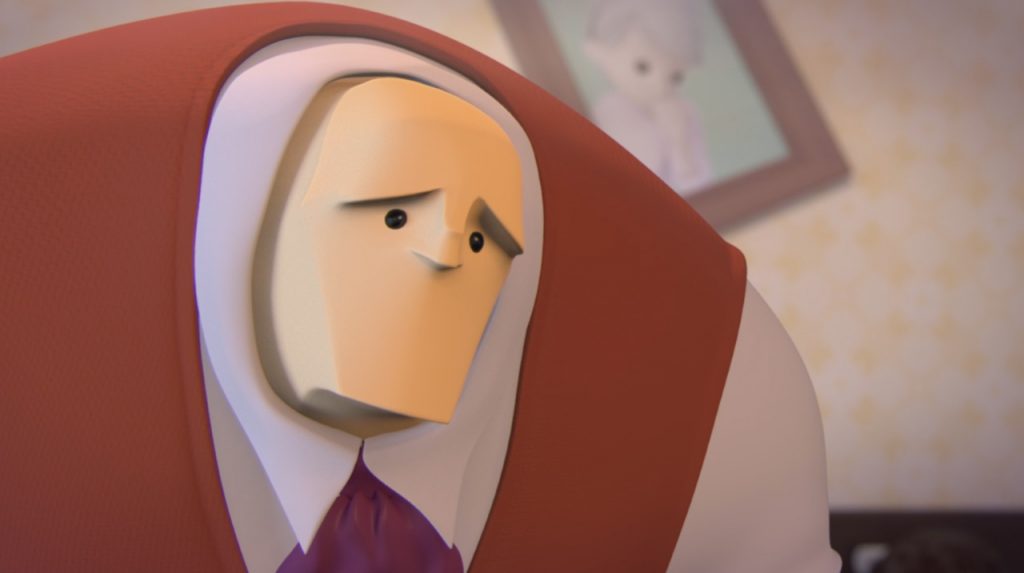
Hair cuts can be tricky, Stan!
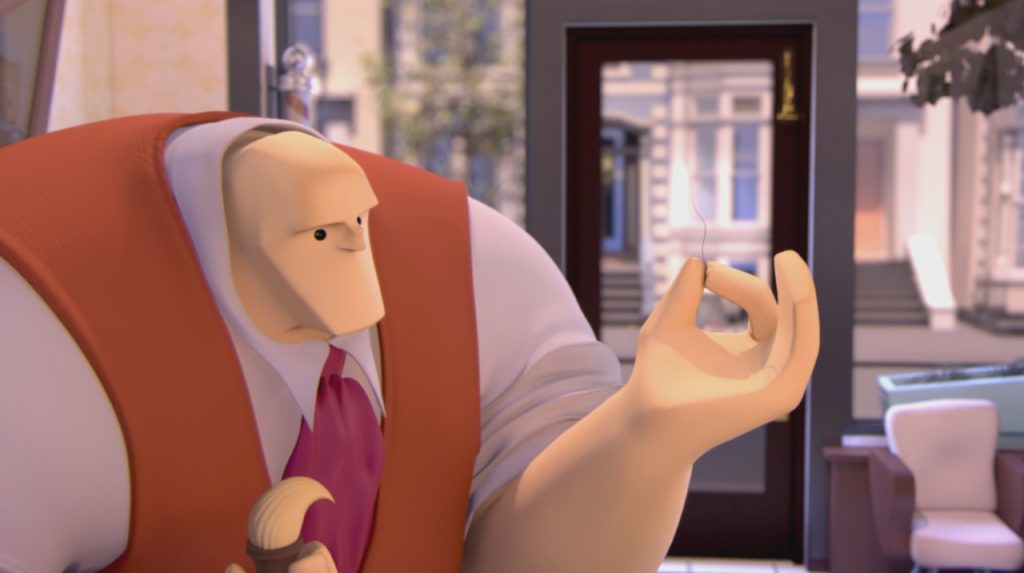
Stan cleaning his brush in Snip
Animation Advice
AM: What advice would you give a brand new animator? AK: Don’t do it alone, show up, put yourself out there. How we met is the best way to illustrate this. We each continually showed up to the google hangout meetup. I didn’t really expect to make friends at AM, I wanted to, but it was such a foreign interface for me to make friends all online and it felt weird putting myself out there. But Steven created an outlet for us to just show up consistently, week after week after week after week. We exchanged honest feedback, we talked about what we were learning, gawked at amazing animation, poked fun at each other and after a year of doing this, we all just became friends. Now after 7 years and a short film, we’ve all become really close. I’m a significantly better animator/filmmaker/storyteller/draftsman because of these 4 guys.Like anything, do the work, observe and seek out your weaknesses, grow and learn, repeat. But what is being the best animator in the world if you’re doing it all alone, what makes it worth doing is the people you do it with.I’m so thankful for all of the time they’ve given to me in the form of feedback/advice/sharing life experience/bearing the weight of hundreds of rejection emails. Every industry job I’ve had thus far was in some way through one of these guys telling me about an opening they saw or vouching for me. I’ve often times imagined how discouraging it would’ve been to do this post graduating AM journey alone. I could give the same animation advice I’ve heard, like, sure animation is hard, keep at it… but what isn’t? Like anything, do the work, observe and seek out your weaknesses, grow and learn, repeat. But what is being the best animator in the world if you’re doing it all alone, what makes it worth doing is the people you do it with. Again, I’m incredibly grateful for these 4 other guys and while it’s been a crazy half decade, I wouldn’t take it back. It’s been a time of incredible growth, learning, laughter, discipline, conflict, pain, problem solving, wonder, and excitement. And in my sight, that’s a good story to tell.
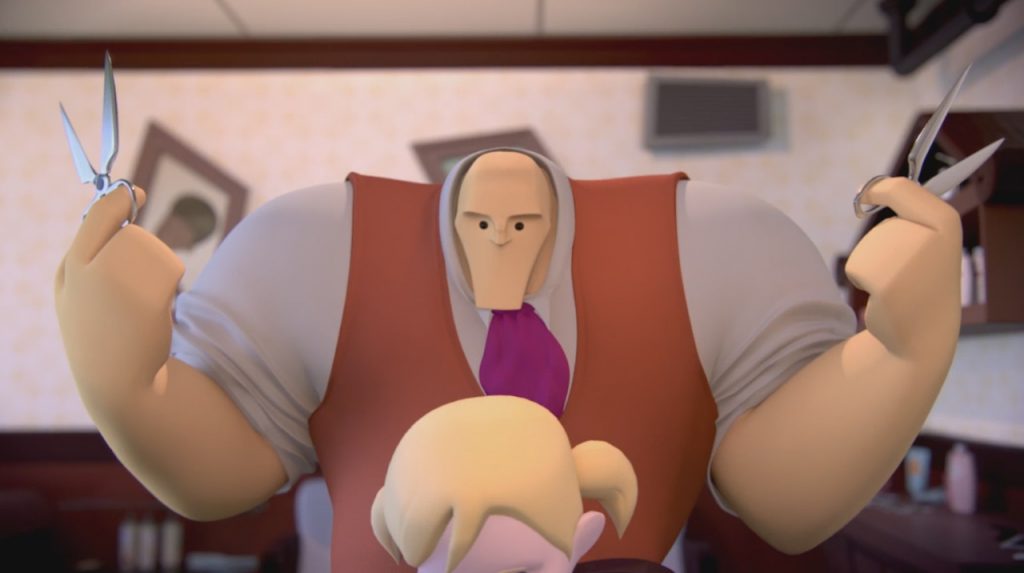
“Here goes nothing!”
We as animators will polish a shot to death and will never be happy with it, and if you keep working on the same shot you will never learn anything new. You will be much better off starting a brand new shot…AM: What’s next for the Snip team? Snip Team: So far we have been riding the wave of what is happening with Snip as it was pretty unexpected. We have discussed some ideas of what we wanted to do next, toying around with story ideas and trying to figure out what form they may take, another short, something longer closer to a feature, or a TV show. But that all depends on the type of story we end up having, as that is the most important thing; having a good compelling story that is worth telling. Whatever we do we want it to be something we care about and feel is worth doing. AM: Lastly and most importantly, where can we see the film? Snip Team: You can watch Snip on YouTube.
